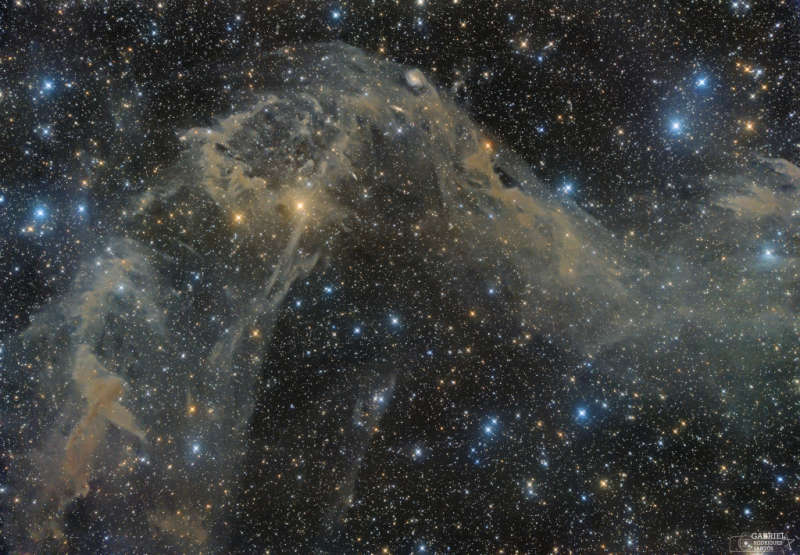Credit & Copyright: Gabriel Rodrigues Santos
Explanation:
The combined light of
stars
along the Milky Way
are reflected by these cosmic dust clouds that soar
300 light-years or so above the plane of our galaxy.
Known to some as integrated flux nebulae and
commonly
found
at high galactic latitudes, the dusty
galactic cirrus
clouds are faint.
But they can be traced over large regions of the sky
toward the North and South Galactic poles.
Along with the reflection of starlight, studies indicate
the dust clouds produce a
faint reddish luminescence
as interstellar
dust grains
convert invisible ultraviolet radiation to visible red light.
Also capturing nearby Milky Way stars and
distant background galaxies,
this remarkably deep, wide-field image
explores a complex of faint galactic cirrus known as Mandel Wilson 9.
It spans over three degrees across planet Earth's skies toward
the far southern constellation Apus.
1999 2000 2001 2002 2003 2004 2005 2006 2007 2008 2009 2010 2011 2012 2013 2014 2015 2016 2017 2018 2019 2020 2021 2022 2023 2024 2025 |
Yanvar' Fevral' Mart Aprel' Mai Iyun' Iyul' Avgust Sentyabr' Oktyabr' Noyabr' Dekabr' |
NASA Web Site Statements, Warnings, and Disclaimers
NASA Official: Jay Norris. Specific rights apply.
A service of: LHEA at NASA / GSFC
& Michigan Tech. U.
|
Publikacii s klyuchevymi slovami:
dust cloud - pylevoe oblako
Publikacii so slovami: dust cloud - pylevoe oblako | |
Sm. takzhe:
Vse publikacii na tu zhe temu >> | |
